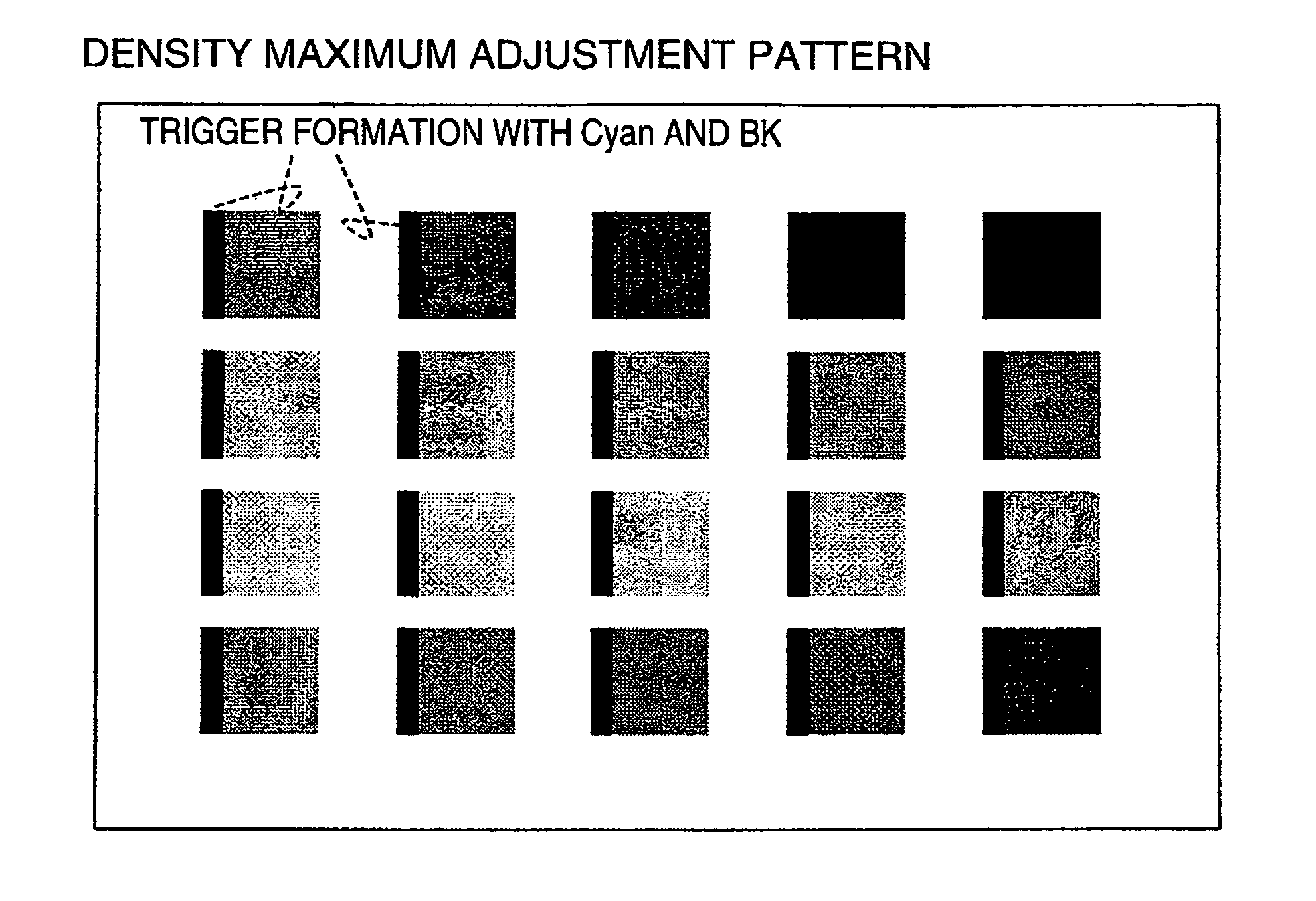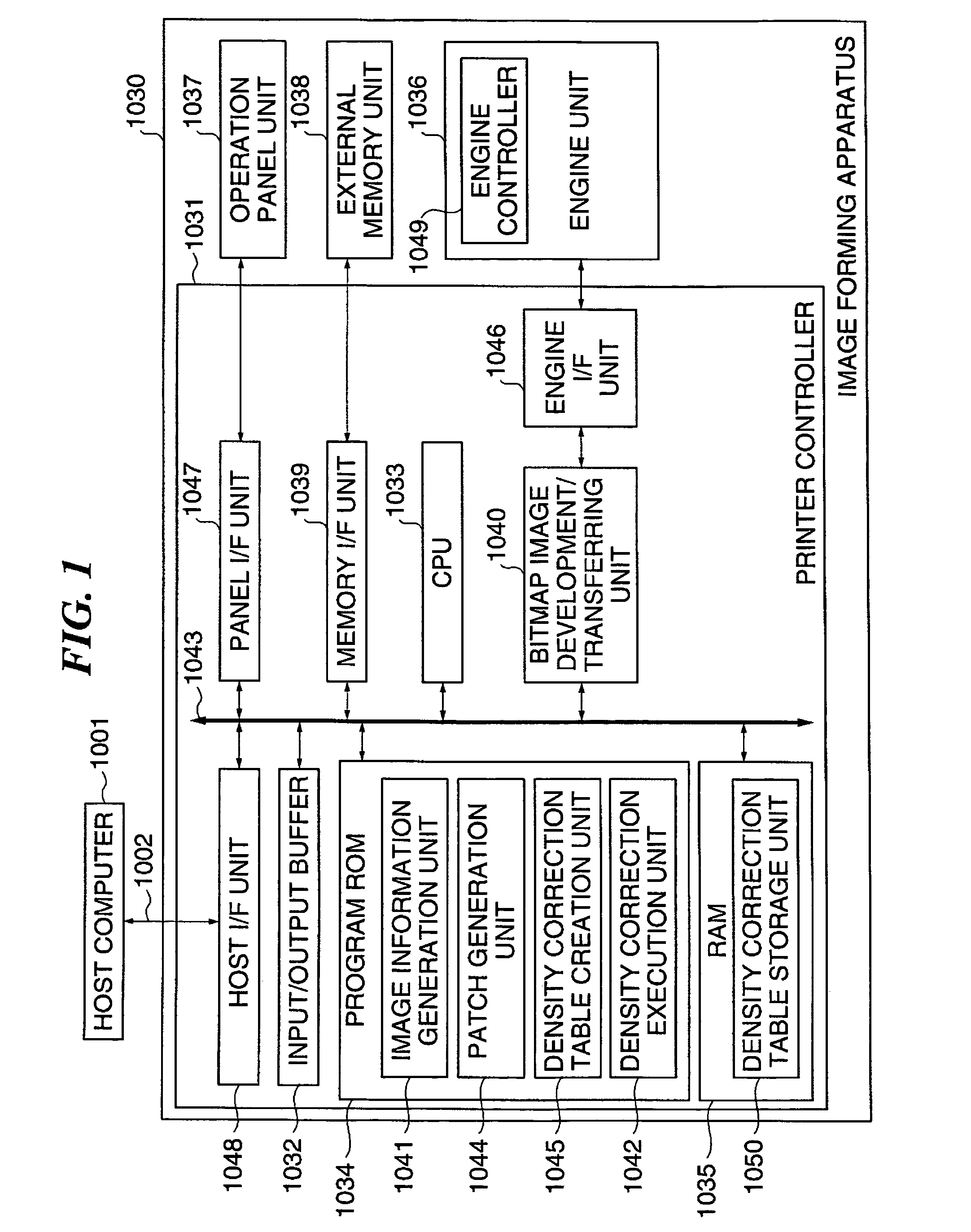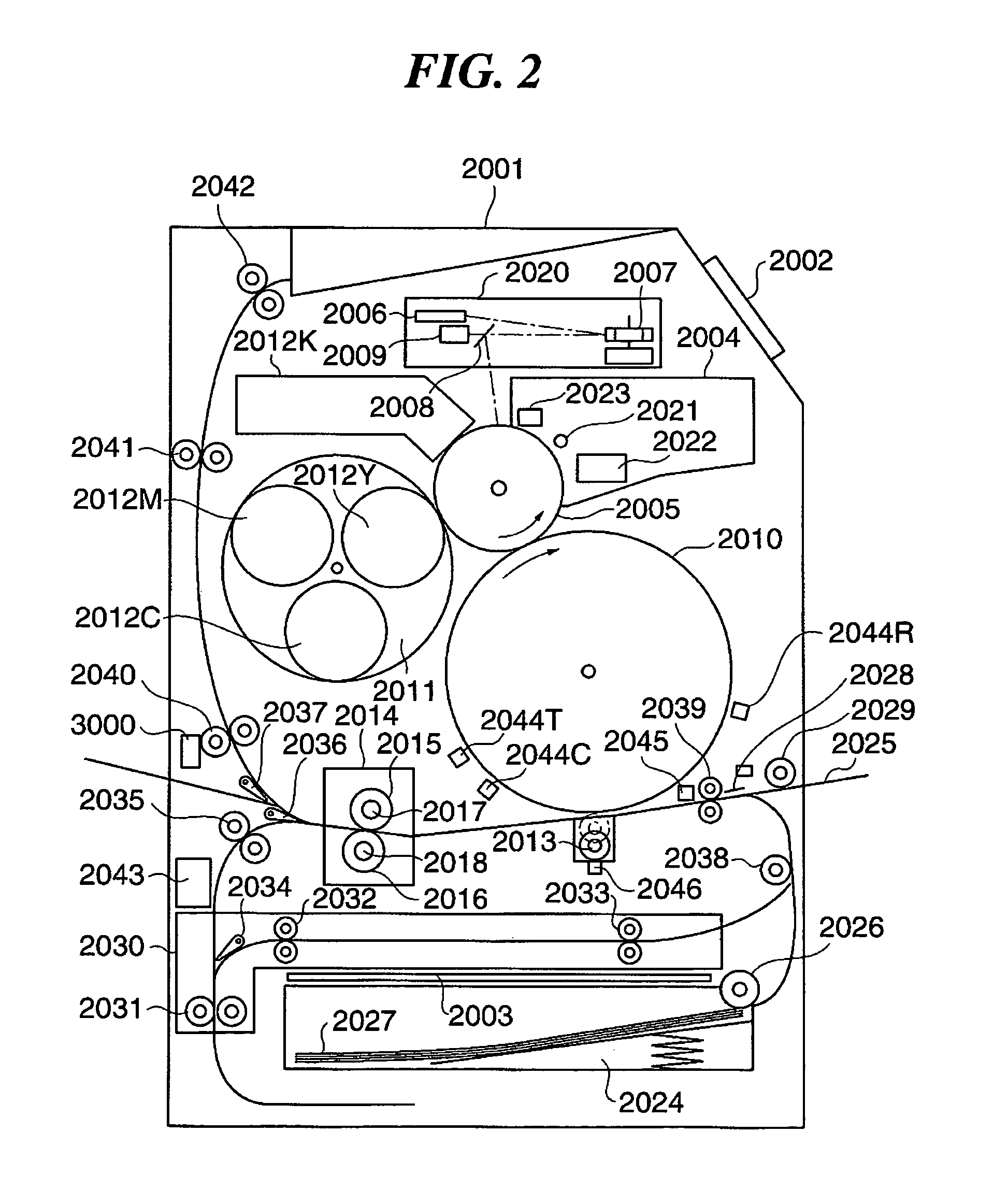Image forming apparatus and control method for the same
a technology of image forming apparatus and control method, which is applied in the direction of electrographic process apparatus, instruments, optics, etc., can solve the problems of omitting operation, user is required to perform complicated operations, and the influence of the fixing process cannot be reflected on the toner density control, so as to improve color stability, high accuracy of read timing of patch image, and high accuracy of density adjustmen
- Summary
- Abstract
- Description
- Claims
- Application Information
AI Technical Summary
Benefits of technology
Problems solved by technology
Method used
Image
Examples
first embodiment
[0050]FIG. 1 is a block diagram schematically showing the construction of a substantial part of an image forming apparatus according to the present invention.
[0051]In the present embodiment, a control method of an image forming apparatus will be described, in which trigger bars of new concept and toner patch images are formed on a transfer material in a plurality of colors and an accurate read timing of toner patch images for a color sensor is generated, the color sensor being disposed on a conveying path located downstream of a fixing device.
[0052]Further, in the present embodiment, an electronic photographic image forming apparatus will be described by way of example. An ink jet image forming apparatus and an sublimation image forming apparatus also have the same problems as in the electronic photographic image forming apparatus, however such problems can be solved by the control method described below. That is to say, the present invention can be applied to various types of image...
PUM
 Login to View More
Login to View More Abstract
Description
Claims
Application Information
 Login to View More
Login to View More - R&D
- Intellectual Property
- Life Sciences
- Materials
- Tech Scout
- Unparalleled Data Quality
- Higher Quality Content
- 60% Fewer Hallucinations
Browse by: Latest US Patents, China's latest patents, Technical Efficacy Thesaurus, Application Domain, Technology Topic, Popular Technical Reports.
© 2025 PatSnap. All rights reserved.Legal|Privacy policy|Modern Slavery Act Transparency Statement|Sitemap|About US| Contact US: help@patsnap.com



